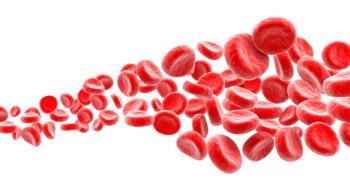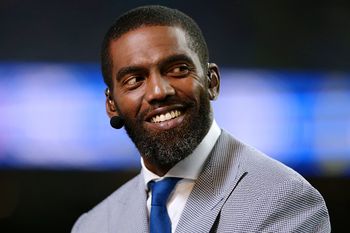
Accurately Diagnosing Non-Hodgkin Lymphoma
Transcript:
Loretta J. Nastoupil, MD: Let’s talk about your presentation. I was there for that. I remember all of the details. I think it is important to highlight some of the things that you went through, particularly for other patients who are encountering this journey, as well.
Whitney Neighbors: Originally, I found a lump in my neck. It was swollen. I thought I had a cold or something like that, but I went to get it checked out. I went to an ENT [ear, nose and throat specialist] first because it was in my neck. We did some CT scans and chest X-rays. It was large, and there was another large one behind it that they could see on the scans, but it didn’t really cause concern because there weren’t any other ones. They just seemed large. We tried using antibiotics to see if that would help. It did not decrease in size. The doctor said, “Let’s just watch it.”
A few weeks later, I had some extreme chest pain on my right side of my body, so I went to the emergency room not knowing what that could be. Doctors performed blood tests and chest X-rays and everything else. They thought I may have had an embolism or pulmonary embolism, and so they ruled all of those things out. My bloodwork seemed fine. They suspected that I had pulled a muscle, but there was nothing else there. I knew I hadn’t pulled a muscle, so I was very frustrated.
A few weeks later, the chest pain came back. My bloodwork was different this time. I tested high for what had showed that I had a blood clot. They did a bunch of tests for blood clots again, and that led me to a cardiologist who couldn’t find a blood clot. My heart was fine. All of my veins were fine, but I still had this swollen lymph node. Some of the scans that had been done in the emergency room had shown spots on my liver, so that was another sign. The cardiologist, even though that wasn’t his specialty, sort of took me under his wing. He said, “We’ve got to explore all of this.” One scan led to more things showing on other parts of my body. Then I had an MRI [magnetic resonance imaging], a CT scan and an ultrasound of my abdomen. All of those tests showed little spots here and there but nothing that could clearly show what was wrong with me.
All of the bloodwork seemed to show that I had some sort of inflammation, but it didn’t point to a specific disease. The lesions and things that they were seeing on different organs — my spleen and my liver — just seemed like cysts and seemed benign, so they didn’t think much about it.
We finally did 2 tests that demonstrated that I was not OK. They did a nuclear bone density scan, which showed lots of reaction, which was very frightening. From that scan, I was originally diagnosed with osteoblastic metastatic disease. I made the mistake of looking that up, and that was very, very frightening.
The other test that we finally did was a biopsy of my lymph node. That also showed that I had cancer, but it showed that I had lymphoma. So, I had these two different diagnoses. I had one that showed that I had an aggressive secondary cancer that had metastasized into my bones, and I had this other diagnosis of lymphoma.
I reached out to a friend who worked at MD Anderson Cancer Center. They put me in touch with you, Dr. Nastoupil. You ran a series of other tests as my second opinion. We confirmed that I had diffuse large B-cell lymphoma. Originally, and with my presentation of the chest pain, you thought that I had a different form of B-cell lymphoma, but we finally got through everything and nailed it down. That’s my journey.
I noticed the lump in January of this year, and I started chemotherapy with you on June 12th. It seemed like a long time, but I think this took a relatively short time to figure out, considering what we were trying to find.
Loretta J. Nastoupil, MD: I think you illustrate some really important findings, and many patients have a very similar experience. I say that based off of the questions that I get. By the time I meet someone, there’s already some clue that there’s lymphoma present. I generally miss out on these months of tests and experiences going down different paths. Eventually, someone does a lymph node biopsy or a mass biopsy, and lymphoma is rendered as a possibility. That’s when an oncologist like myself comes into the scene.
You highlight a couple of important things. You knew this was a lymph node. Many people know they have a lump or a bump, but they don’t know what it is. Often, they will present to their primary care physician. They think it’s an infection. They get placed on antibiotics. Often, the lymph nodes will shrink temporarily and then they come back. That’s usually when additional testing is pursued.
The question I often get asked is, “I had these symptoms that were going on for so long. Why was there not a blood test or a CT scan or an ultrasound to pinpoint that this was lymphoma?” I think this happens because there are so many nonspecific findings.
You had lymph nodes that were enlarged. You had areas in the liver that looked suspicious. You had these lesions in the bone. Do you put all of that together into 1 disease? Or, like you said, did you have multiple things going on?
In general, when you’re thinking about cancer, when you have lymph node or bone involvement, the first thing that jumps out is: This is metastatic breast cancer or metastatic lung cancer or colon cancer — something much more common than lymphoma. Again, as frustrating as it is, your patient journey is pretty common in terms of what I see other patients go through. At the end of the day, the other question that often gets posed is, “If we had caught this earlier, would my outcome be different?” I try really hard to reassure patients that stage 4 diffuse large B-cell lymphoma is just as curable as something that is of a limited stage. It probably has nothing to do with the fact that it took 6 months to render a diagnosis. It just has to do with the fact that this is a blood cancer, and these cancer cells will be in numerous places.
You highlight another important feature: Most lymphomas happen in older patients. You’re a young female who was otherwise very fit. You were physically active. So, sometimes we will even be swayed. As a lymphoma expert, I thought you had a different type of lymphoma when I first met you without having all of the information. It’s important to finish your workup. Get a biopsy. Get a PET [positron emission tomography] scan. In your case, we did a bone marrow biopsy before we defined what treatment you should receive.
At the end of the day, we found out that you had diffuse large B-cell lymphoma. It was stage 4. There are various types of large cell lymphoma. You had one that was easily treatable with standard treatment. As you mentioned, once we finally nailed all of that down, we got you started on treatment right away.
Transcript Edited for Clarity




